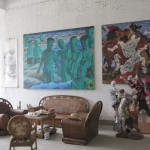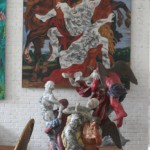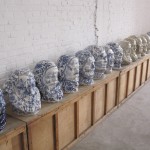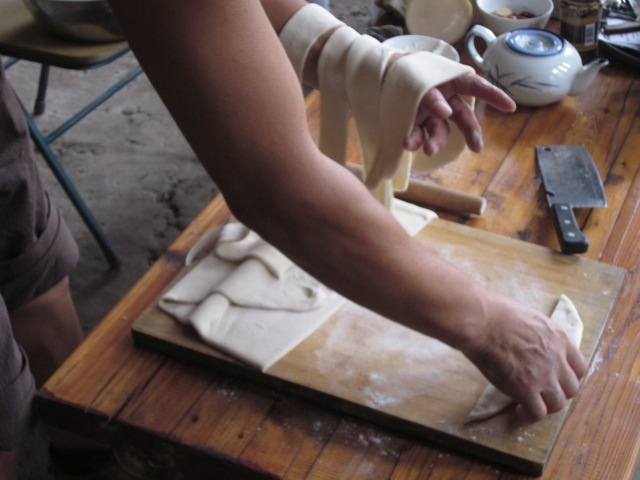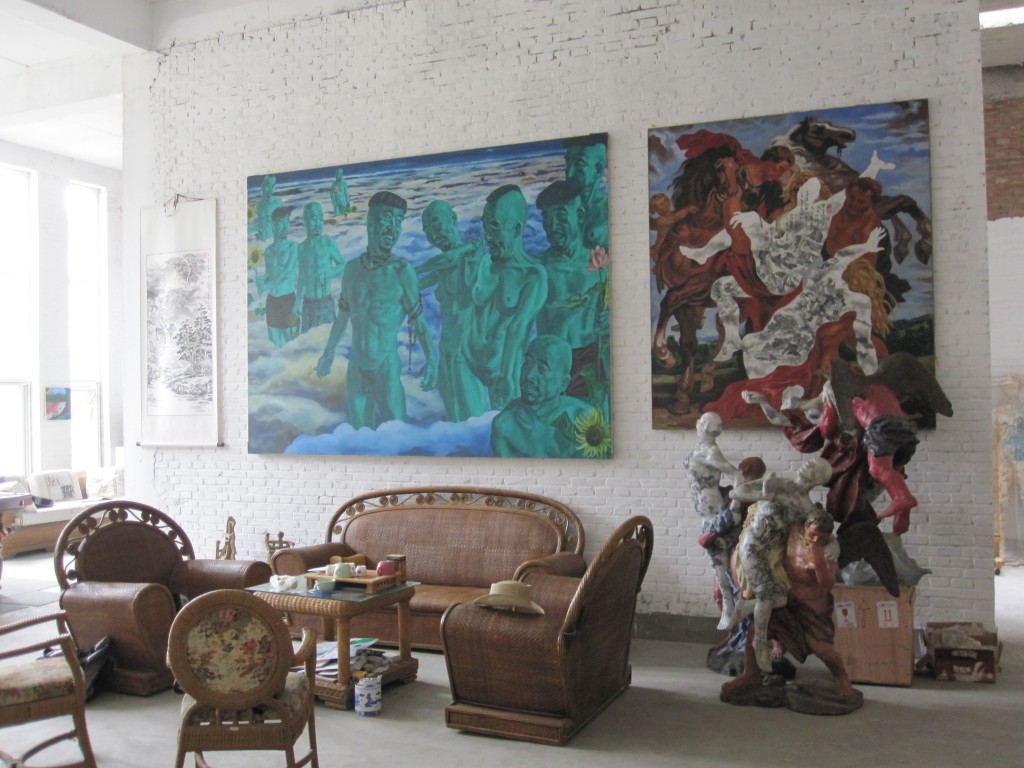
Mr. SouTian is an artist who lives and works in the Song Zhuang area. Song Zhuang is an area outside of Beijing which has been developing as an artist community over the past 25 years. Starting as a rural retreat for artists who wanted studio space outside the city, the area now attracts foreign artists and students from art schools. It also attracts tourists and members of the art world who want to visit artist’s studios and galleries.
Mr. SouTian identifies as a sculptor, a painter, ceramicist and a calligrapher. During the course of the visit to his studio, the fieldwork team was able to see work in all four mediums. The tour of Mr. SouTian’s studio space began in an open room with some of his finished works on display including ceramic work, painting, calligraphy and sculpture. The first piece Mr. SouTian explained to the fieldwork team, which hung in the entryway to the studio, was a painting of Mao and several individuals reacting to Mao’s presence. The artist described this not as a criticism of Mao but was instead was a representation of the variety of responses people can have to Mao and his legacy. Members of the fieldwork team found a resemblance between people in the painting and the artist himself.
The open space of the studio, which displayed finished work, was about fifty feet by fifty feet. There was another corner of the studio with a work in progress. This painting in progress was off to the left when you first walk in to the studio and was propped up against the wall. In the work area there were reference books stacked under paints and brushes. One book was open to a page with pictures of starfish and sharks, which the team was able to recognize in the painting the artist was currently working on. The video below has close up shots of this in progress painting and further information about the artist’s practice. The studio also had a pool table and Mr. SouTian had converted it in to a calligraphy workspace. The pool table had paper, inks and brushes on top of it. The table had a thick mat made of wool one quarter of an inch in height. The wool had newspaper on top of it in order to keep the ink from soaking through on the surface of the pool table. The pool table also had several crumpled pieces of practice calligraphy paper on it.
Mr. SouTian discussed the significance of the combination of materials he uses in his work, specifically with regard to his ceramic work. He created porcelain busts of communist figures such as Marx, Engels and Mao. He paints on the ceramic figures using, what he described as, traditional Chinese brush painting techniques. Mr. SouTian’s work in all mediums often has a mixture of contemporary and historically practiced themes or techniques. He told the fieldwork team the mixture of contemporary ceramic techniques and Chinese brush painting techniques symbolizes the contrast between “common people” and the refinement of political thinkers. When he first showed the busts to the team, Mr. SouTian asked us if we were able to identify the names of any of the busts of political figures.
Mr. SouTian conducted the tour of his studio in Mandarin. Two members of the fieldwork team, YuTing and Jo, translated for the group and translated questions from the English speakers in the group for Mr. SouTian during an interview. It was very hot inside his studio and Mr. SouTian gave all the members of the fieldwork team fans during the interview portion of our visit. This space was much quieter and there was less noise from construction of nearby buildings in Mr. SouTian’s studio. After the interview we continued the tour behind a wall dividing the studio from a storage area. The storage area had covered sculptures and a cardboard bucket where calligraphy practice sheets, some of which were more than three years old, were stored. The work area had materials, such as acrylic and oil paints, stored on a rolling platform lined with cardboard. At the conclusion of our visit Mr. SouTian signed several cards with images of his artwork for the team. He also did calligraphy on the pool table on a fan for Professor Blandy. He used ink and brushes already out on the pool table and finished the piece with a wax seal.
[vimeo]http://vimeo.com/33122667[/vimeo]
Looking through the images of work in Mr. SouTian’s studio included below, can you notice any themes from Christian artwork mentioned during the video clip? Where can you identify motifs created by Chinese brushwork? How do you interpret the interaction between these themes in his work?

